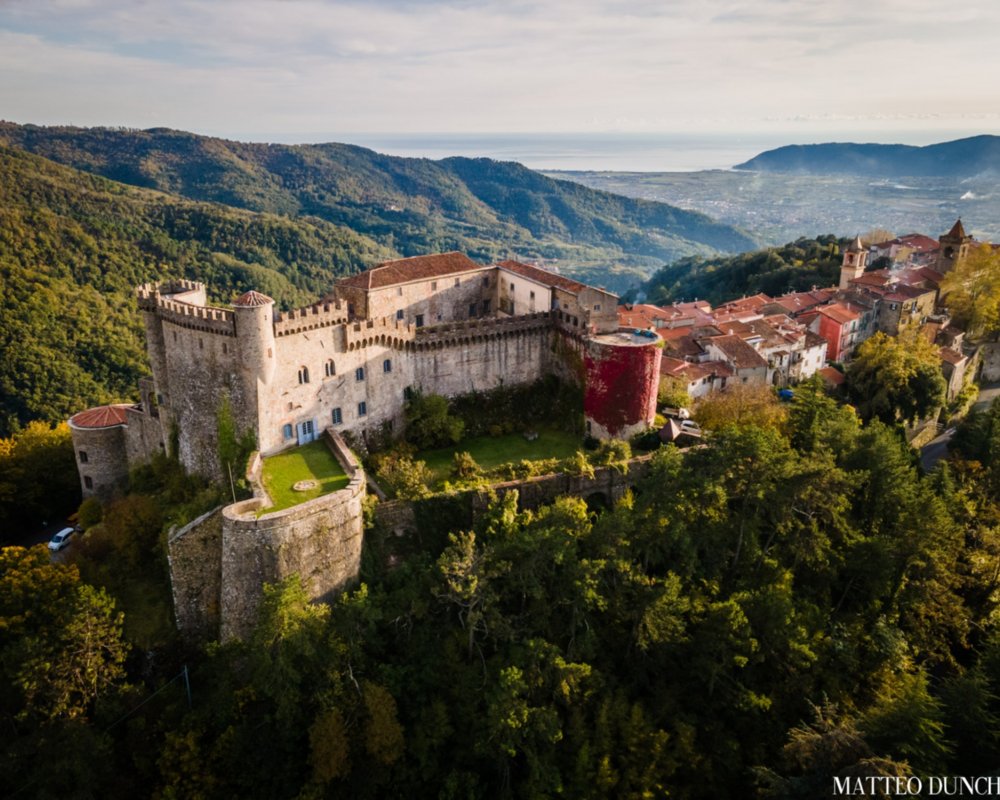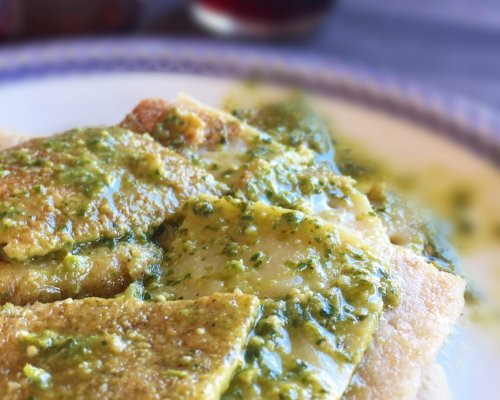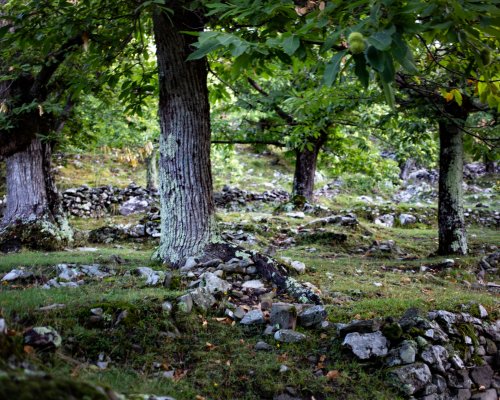Four days discovering a land of ancient flavors
A multi-day itinerary immersed in the lands of Lunigiana, a land of ancient flavours and knowledge. Although this trip is perfect for any season of the year, in the autumn months the flavors become even more intense thanks to the products of the undergrowth, the true protagonists of Lunigiana cuisine: mushrooms and especially chestnuts.
The town of Pontremoli, the only key and gateway to Tuscany according to Emperor Frederick II, offers visitors as much beauty and artistic abundance as it does simplicity and authenticity in its typical dishes. Your eyes fill with wonder as you immerse yourself in the discovery of the main monuments of Pontremoli Baroque: from the Cathedral of Santa Maria Assunta, to the frescoed chapels of the Church of San Francesco, to the majestic rooms of Palazzo Dosi Magnavacca and the masterpieces of Villa Dosi Delfini.
Between a fresco and a stucco, there are many gastronomic stops to be made: breakfast of Amor cakes in the historic pastry shop in the historic center, still furnished in Art Nouveau style; aperitif with Bianco Oro, a secret recipe to be tasted in front of the Duomo; snack of Ramaino, an ancient bread with spices and candied fruit; and finally, quick lunch of focaccina and farinata, a chickpea cake lent to Lunigiana from nearby Liguria.
In addition to these Pontremoli specialties, all the restaurants offer the great classics of Lunigiana cuisine, ideal for both lunch and dinner: torte d'erbi, stuffed vegetables, testaroli al pesto.
The town of Pontremoli, the only key and gateway to Tuscany according to Emperor Frederick II, offers visitors as much beauty and artistic abundance as it does simplicity and authenticity in its typical dishes. Your eyes fill with wonder as you immerse yourself in the discovery of the main monuments of Pontremoli Baroque: from the Cathedral of Santa Maria Assunta, to the frescoed chapels of the Church of San Francesco, to the majestic rooms of Palazzo Dosi Magnavacca and the masterpieces of Villa Dosi Delfini.
Between a fresco and a stucco, there are many gastronomic stops to be made: breakfast of Amor cakes in the historic pastry shop in the historic center, still furnished in Art Nouveau style; aperitif with Bianco Oro, a secret recipe to be tasted in front of the Duomo; snack of Ramaino, an ancient bread with spices and candied fruit; and finally, quick lunch of focaccina and farinata, a chickpea cake lent to Lunigiana from nearby Liguria.
In addition to these Pontremoli specialties, all the restaurants offer the great classics of Lunigiana cuisine, ideal for both lunch and dinner: torte d'erbi, stuffed vegetables, testaroli al pesto.
In the National Park of the Tuscan-Emilian Apennines, the small village of Apella (Licciana Nardi) which today houses a diffuse hotel and one of the best agritourism farms in all of Italy, is the heart of the production of two of Lunigiana's gastronomic excellences: the Chestnut Flour of Lunigiana PDO and Chestnut Honey of Lunigiana PDO. Traditional dishes such as chestnut fritters, pattone, small cakes baked in chestnut leaves, and lasagna bastarde, prepared by mixing chestnut flour and wheat flour, are still prepared with these products.
In these places, it is possible to walk through the autumn-colored woods, searching for chestnuts and mushrooms, smelling the scent of lit metati (stone building for the drying of chestnuts) and witnessing the still-used practice of slow drying of chestnuts.
In the National Park of the Tuscan-Emilian Apennines, the small village of Apella (Licciana Nardi) which today houses a diffuse hotel and one of the best agritourism farms in all of Italy, is the heart of the production of two of Lunigiana's gastronomic excellences: the Chestnut Flour of Lunigiana PDO and Chestnut Honey of Lunigiana PDO. Traditional dishes such as chestnut fritters, pattone, small cakes baked in chestnut leaves, and lasagna bastarde, prepared by mixing chestnut flour and wheat flour, are still prepared with these products.
In these places, it is possible to walk through the autumn-colored woods, searching for chestnuts and mushrooms, smelling the scent of lit metati (stone building for the drying of chestnuts) and witnessing the still-used practice of slow drying of chestnuts.
An itinerary in the history of the Book, between two ancient villages in Lunigiana. Montereggio (Mulazzo) is the village of the Booksellers, walking through the streets of the village with its stone houses you can read the accounts of the itinerant book sellers who left Lunigiana with a basket loaded with books to be distributed door to door, arriving to found great historical bookstores and publishing houses all over the world.
After the walk through the ancient village, we recommend stopping for lunch at one of the agritourisms located along the right bank of the Magra, where you can enjoy Panigacci prepared with the small terracotta texts or dishes prepared with the cast-iron texts: not only testaroli al pesto, but also the Agnello di Zeri and the torte d'erbi of Lunigiana.
Moving toward the Eastern Lunigiana, the paths of the Book lead to Fivizzano, one of the very few towns in Europe where printing was already taking place in the 15th century. In the "Gerini" Library are preserved Incunabula and Cinquecentine that testify to the foresight of Jacopo Fantoni, a 15th-century Fivizzano printer. After the visit, we delight in a taste of China Clementi, one of Lunigiana's historic elixirs, here handcrafted by the village pharmacy.
An itinerary in the history of the Book, between two ancient villages in Lunigiana. Montereggio (Mulazzo) is the village of the Booksellers, walking through the streets of the village with its stone houses you can read the accounts of the itinerant book sellers who left Lunigiana with a basket loaded with books to be distributed door to door, arriving to found great historical bookstores and publishing houses all over the world.
After the walk through the ancient village, we recommend stopping for lunch at one of the agritourisms located along the right bank of the Magra, where you can enjoy Panigacci prepared with the small terracotta texts or dishes prepared with the cast-iron texts: not only testaroli al pesto, but also the Agnello di Zeri and the torte d'erbi of Lunigiana.
Moving toward the Eastern Lunigiana, the paths of the Book lead to Fivizzano, one of the very few towns in Europe where printing was already taking place in the 15th century. In the "Gerini" Library are preserved Incunabula and Cinquecentine that testify to the foresight of Jacopo Fantoni, a 15th-century Fivizzano printer. After the visit, we delight in a taste of China Clementi, one of Lunigiana's historic elixirs, here handcrafted by the village pharmacy.
The Castle of Fosdinovo, the only one still in the properties of the Malaspina dello Spino Fiorito family, dominates the lower Magra Valley , the production area of Vermentino Colli di Luni DOC. From the patrol walkways of the ancient manor, whose interior still displays 19th-century frescoes depicting the events of Dante's sojourn in Lunigiana, the view sweeps from the Apuan Alps to the Gulf of Poets in eastern Liguria. And the flavors of Liguria can be found in the Fosdinovese cellars, located along the hillside dotted with vineyards and olive groves: here you can taste the fresh and fragrant Vermentino of the Colli di Luni.
The Castle of Fosdinovo, the only one still in the properties of the Malaspina dello Spino Fiorito family, dominates the lower Magra Valley , the production area of Vermentino Colli di Luni DOC. From the patrol walkways of the ancient manor, whose interior still displays 19th-century frescoes depicting the events of Dante's sojourn in Lunigiana, the view sweeps from the Apuan Alps to the Gulf of Poets in eastern Liguria. And the flavors of Liguria can be found in the Fosdinovese cellars, located along the hillside dotted with vineyards and olive groves: here you can taste the fresh and fragrant Vermentino of the Colli di Luni.


